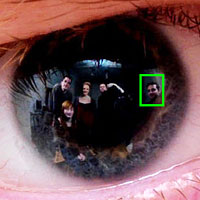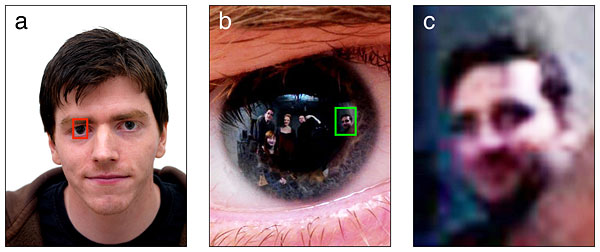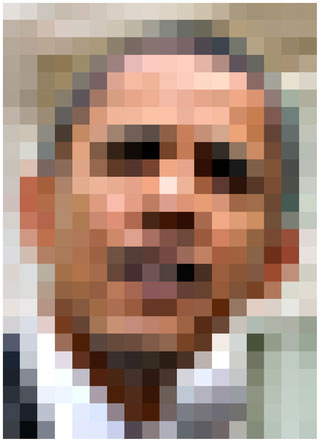Eye reflections could catch criminals, say researchers
posted Monday, December 30, 2013 at 4:27 PM EDT

It's sometimes said that the eyes can tell stories, but until now you may not have realized just how informative those stories can be. New research from the University of Glasgow suggests that eye reflections captured in photographs could be used to fight crime, or simply to tell us more about the environment in which a photo was taken.
If you've spent much time pixel-peeping your photos to check that your subjects' eyes are in sharp focus, you'll doubtless have noticed that you and your camera gear are sometimes visible in reflection, along with bystanders and even signs of the surrounding room or scenery. The research article -- available to view free of charge on the peer-reviewed scientific journal PLOS ONE -- posits that these reflections provide sufficient information to be of use in fighting crime.

For example, suggest the researchers, purveyors of child pornography or those holding hostages might be identified through the reflections, or their location determined. To back up the assertion, they point to the rise of high-resolution smartphone cameras, and demonstrate just how detailed the reflections can be under ideal conditions with a 39-megapixel Hasselblad H2D medium-format camera.
Of course, that's an image shot in ideal conditions. In the real world, the lighting might not be right to create a reflection, the dynamic range of the sensor not sufficient to capture it fully, the resolution too low for it to be helpful, or the subject's eyes not within the depth of field. But then, the amount of information needed is surprisingly small so long as you have access to somebody who recognizes the individual(s) in the reflections, as the article points out. As proof of this, a well-known face is included in the paper at 16 x 20 pixel resolution -- and despite the fact there are only 320 pixels to work with, the individual in the image will prove easily identifiable to most of us.

At the end of the day, even if only a minority of shots retain sufficient information in the reflections, examining them routinely could still occasionally be a useful technique. And as the resolution and dynamic range of cameras continues to increase, it's only likely to become more so.
See more info in the white paper on PLOS ONE.
(via Engadget)